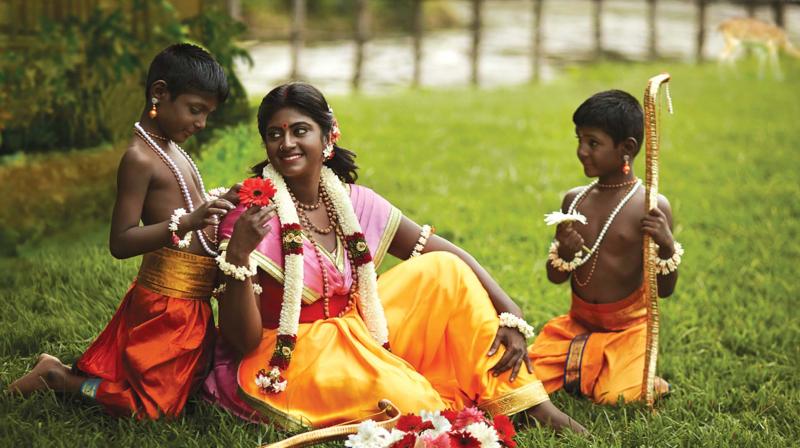Seeing beauty beyond colour

All these years, the popular imagery of Hindu deities has been of fair-skinned model-like figures with chiseled torso sporting a halo – the images seen on Sivakasi calendars. When Chennai-based ad film makers Naresh Nil and Bharadwaj Sundar decided to do a different photo series for their personal satisfaction, after myriad brainstorming sessions, they zeroed in on the subject ‘Dark is Divine’. Featuring everyday men, women and children, the photo series showed Gods and Goddesses as dark-skinned figures. No sooner than they uploaded the photos on Facebook did it break the Internet; with close to 5,000 shares and over 3,500 likes.
Call it a revolutionary act, the duo would correct you. “The photos and idols of Gods we have been seeing are in no way close to reality. Of course, no one has seen God, but the images need to be true according to the epics. Ours was an attempt to do it right along with pointing to people’s obsession with fairness,” they say.
Naresh and Bharadwaj have been friends since college days and their start-up firm has been working on ad films, fashion photo shoots and musicals since 2012. At times, between work pressure from clients, they do a few works “from their heart”. The Dark is Divine is one of those.
“Earlier, we have done two videos — 60 jobs, 60 seconds for May Day and an a cappella version of Jana Gana Mana for Independence Day. This idea came up a couple of months ago and after doing a bit of research, we started working on it,” recalls Naresh, who handled the photography part.
Bharadwaj reveals that they had planned it as a 12-photo series and due to time and budget constraints, narrowed it down to six. “The seventh one — of Sita and Lava-Kusha — was not planned earlier. Our makeup artist Sridevi Ramesh, who is also a plus-size model, was inspired by the work and expressed interest that she be part of it. And she became the Sita,” he says.
The photos have it all – the grace, aura and divinity; even the postures are maintained in the traditional way. Bharadwaj explains, “We were already bringing a change and didn’t want to make it more abstract.”
Both of them agree that before looking into movies or blaming popular culture for inculcating a penchant for fairness, one should introspect. “Everything starts from home. Every mother wants their son to marry a fair girl, a ‘Lakshmi’. That’s what needs to change,” Naresh says.
Bharadwaj adds, “There’s so much negativity associated with dark skin. Lord Ram and Lord Krishna, who are dark-skinned according to the Puranas, are portrayed as fair or blue. Even Ganesha is all white-skinned in paintings, movies and idols. Have we ever seen a white elephant?”
While a lot of people have appreciated the work, not all are happy about it. “When we try to break what people have been seeing for long, they will naturally be upset. But this is our one small step towards making a change,” Bharadwaj says.
This photo series, they hope, will bring acceptance to all those dark-skinned women who are expected to be like Lakshmi.

